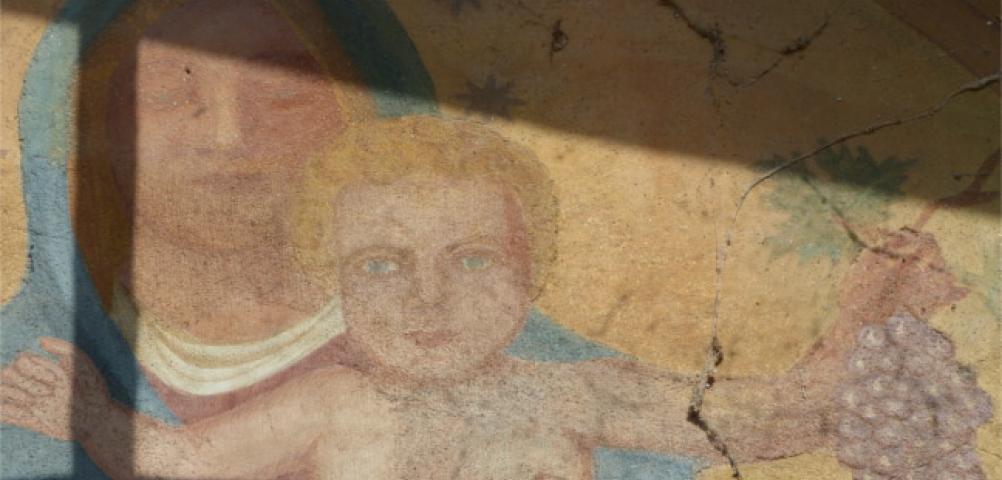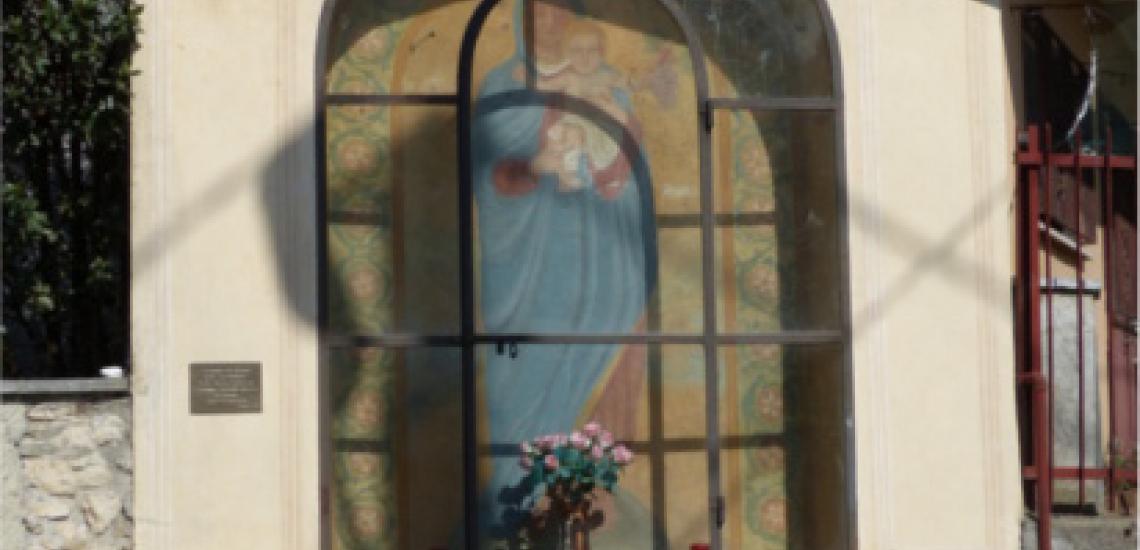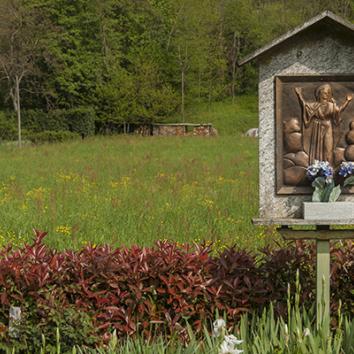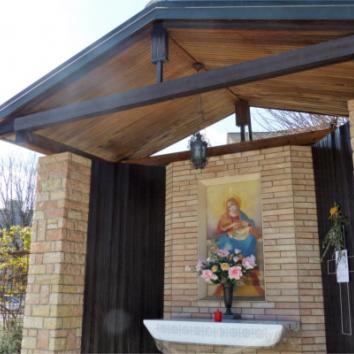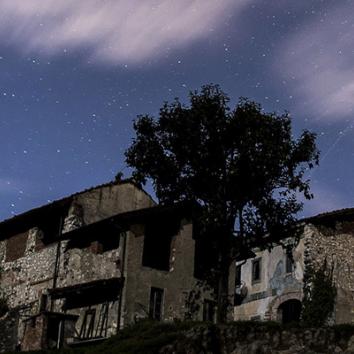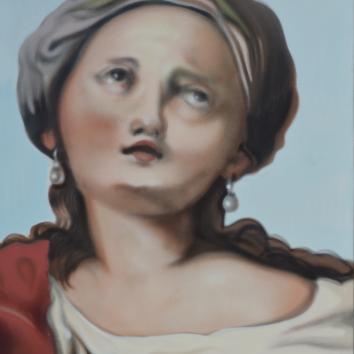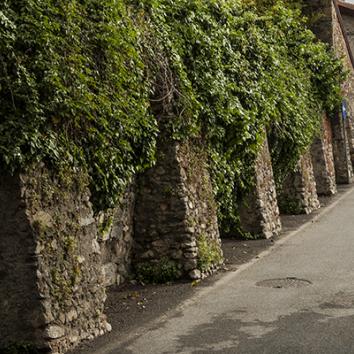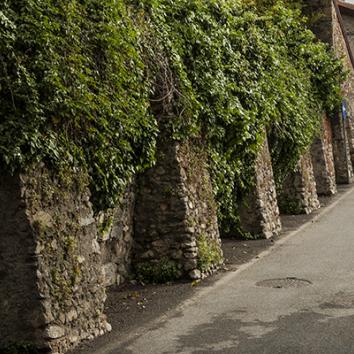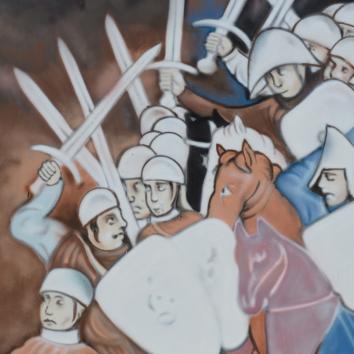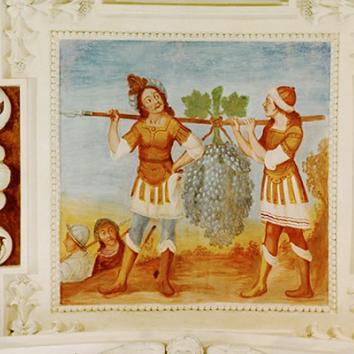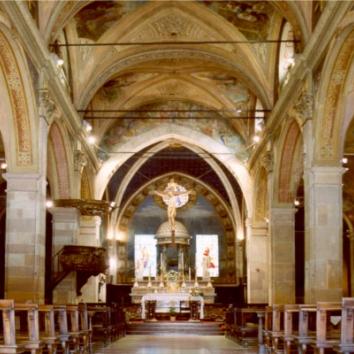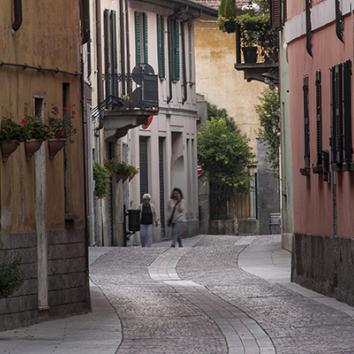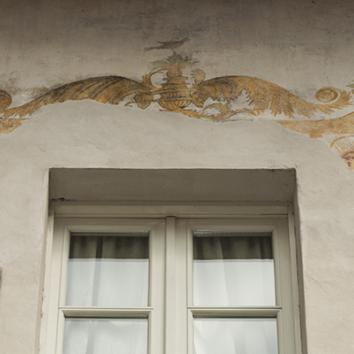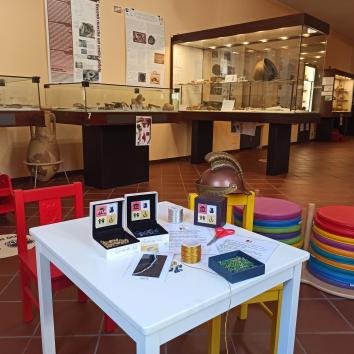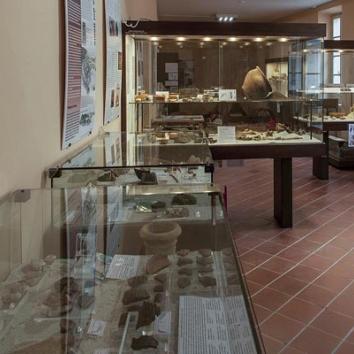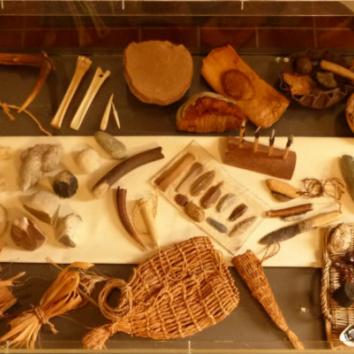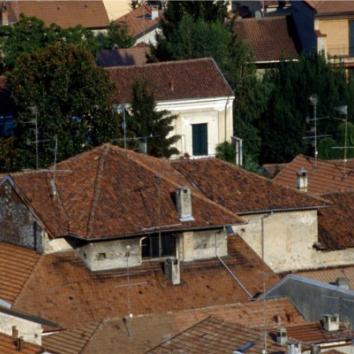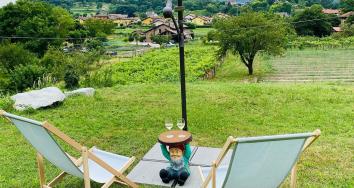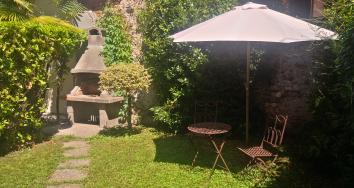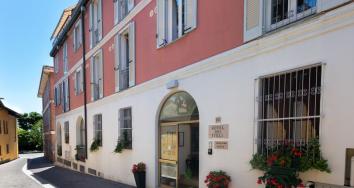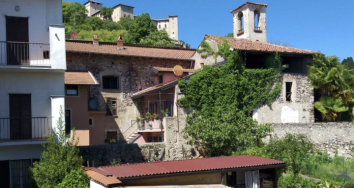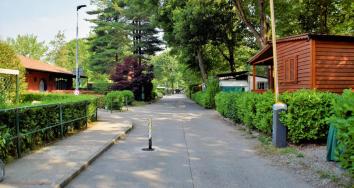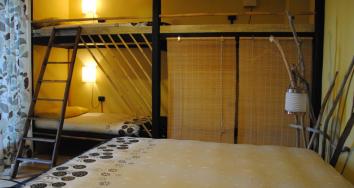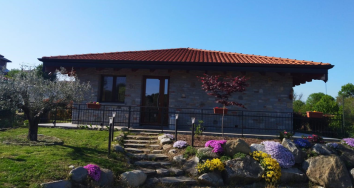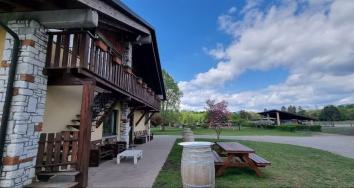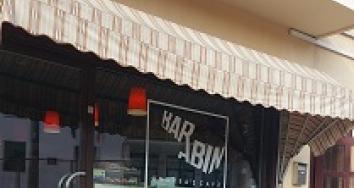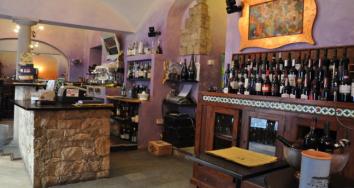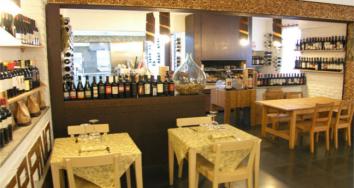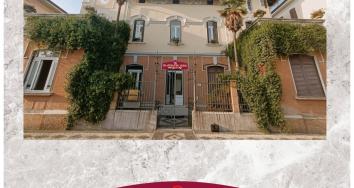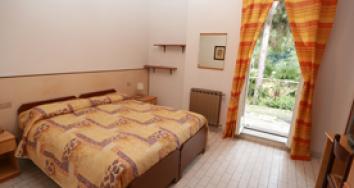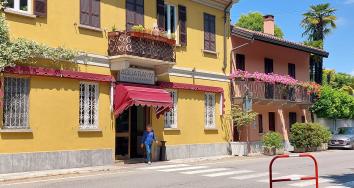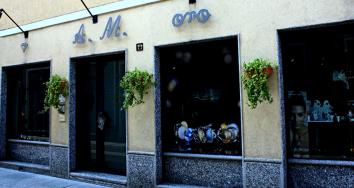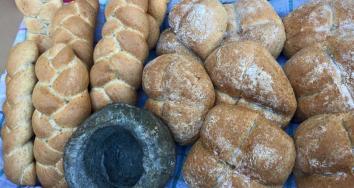Madonna dell'Uva Shrine
20th century
The shrine stands on the old road to Ranco just after the junction with Via Bologna, in a part of the town known as Altinada, in an area once occupied by the church of San Cassiano. Important archaeological discoveries have been made in this zone, such as the burial urn of Calventia Virilliena on display in the worked-stone section of the Archaeology Museum at 2 Via Marconi, Angera.
The painting shows the Madonna standing, wrapped in a blue cloak and crowned with stars, holding the Baby Jesus in her arms. The Child holds a bunch of grapes, a reference to the importance of wine-making in Angera's hinterland.
The chapel and painting were restored in May 1995, with funding from the quarter's inhabitants, Fratelli Giombelli, the Sesto Calende C.A.I., the Isprese Theatre Company, the ProLoco and the council.
Religious rites to protect the vines
The health of the vines was important to the community – so much so that many of the special religious rites recorded in the centuries-long Angera priory Capitular Diaries were devoted to it. A document of 1712 records that in times gone by the town's vineyards were often infested by animal pests – in particular little egrets – that caused considerable damage to grape production and the plants themselves. The reference to the egret is rather strange; it is an aquatic bird very similar to the heron, found on our lakes in summer, but which feeds mainly on fish, amphibians and reptiles rather than fruit. The name might therefore refer to magpies – or indeed some other harmful organism, e.g. an insect or mould, that might leave white filaments as do little egrets.
Whatever this pest was, it must have caused great concern; Angera's community leaders decided to obtain a sacred blessing from the Holy See. This was granted in 1681, but not put into effect. Subsequent requests and the payment of all the expenses by the community led to a papal blessing, absolution and plenary indulgence in 1712. These functions were celebrated in the third week of April, after three days' fasting, and followed by a religious procession.
The local people were invited to prepare with particular piety and devotion. On Wednesday, the first of the day of the fast, the people and confraternities conducted a procession of suffrage to the dead at the old plague house, called Prato dell'Ossi near the lake shore, where they spread a black carpet accompanied by four torches and sang the Ambrosian antiphon "usque in vita mea (laudavi te domine)", litanies and prayers for the dead, which continued until they returned to the collegiate church. The next day, the people and confraternities went in procession to the church of San Vittore, in the town, now deconsecrated Here the chapter sang the anthem "Vexilla Regi" and the oration "Passione Domini", and on their return sang "Stabat mater" and other prayers of the Passion, followed by a prayer by the Society of Jesus preacher. On the third day of the fast they went in procession to sing Mass in the Beata Vergine dei Miracoli church this was followed by confession. Sunday was the day of the Pope's benediction, read in Latin and in vernacular after solemn chants with music. Then they went out in procession, with the songs for the dead “de Profundis“ and “Miserere”, walked around the church while the priest sprinkled Holy Water, stopped in the square, at the cemetery in front of the church, and went from there to the Santa Caterina Gate, towards the Prato del ponte Cross. It is possible that a bridge – whose remains were found at the junction with Via Cadorna during a 1990s excavation – was used to cross the ditch located on the eastern side of the town. The procession continued along the Varese Road, near the San Michele shrine towards Uponne and thence to Ranco; it returned to Angera on the Vigane road through the Fornetto wood. Continuing towards Angera, the procession arrived at the Beata Vergine della Pace Chapel.The faithful in procession and the musicians then sung “Te Deum laudamus” and the provost brought the function to a close with an exhortation to the people, who participated in large numbers, hoping to receive the grace of Our Lady for the vines and the grape crop.The community of Angera procured the wax, and what was needed for the patron saint's celebration, six musicians including an organist, the altars, the remuneration for the ministering clergy, the vestments, the incense and everything else required for the function.

